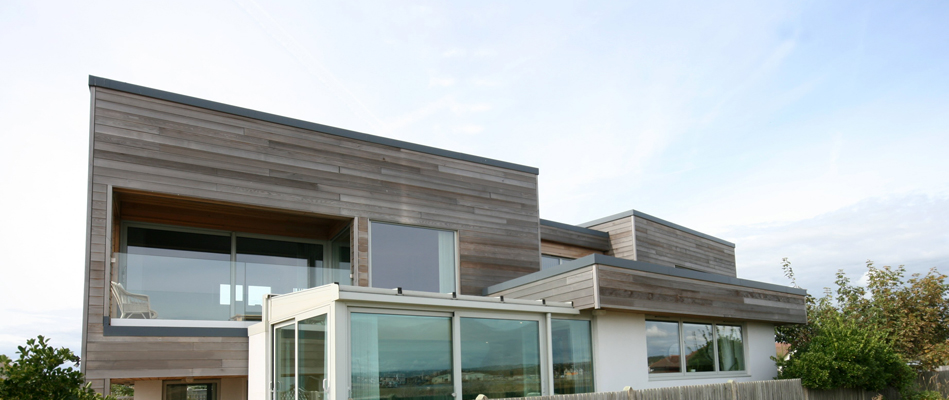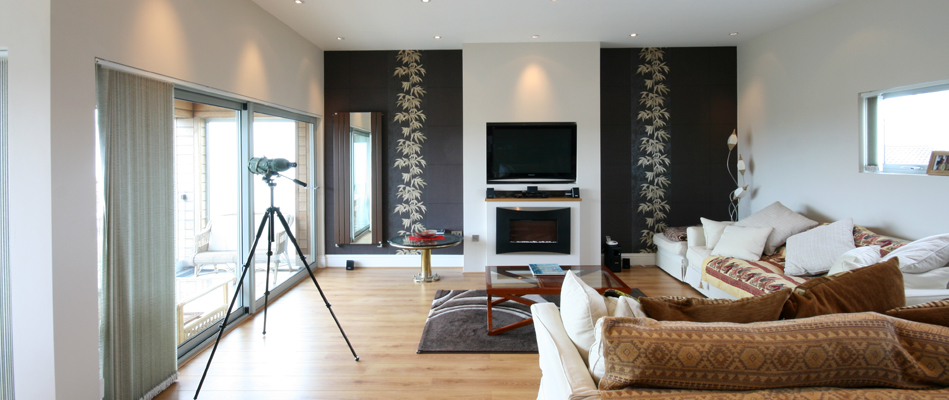The existing 1960s property was a large bungalow of 224 sq.m, sited on a south coast beach. The three bedroom and two bathroom property was arranged around a central courtyard and had a poor quality UPVC conservatory and was cosmetically very dated. The owners wished to add an entire additional storey, to make the most of the sea views, and replace the conservatory. They also wanted to upgrade the existing ground floor accommodation.
The proposed additional storey of almost 100 sq.m was designed as two timber-clad boxes, each aligned with the two differing geometries of the bungalow below, divided by a glazed stairwell.
One “box” contains a master bedroom with balcony and ensuite bathroom, the other a living area with kitchen for entertaining, and an external terrace.
Large areas of glazing were installed to maximise the enjoyment of the sea views. Iroko hardwood cladding was specified for the external cladding, carefully detailed to allow ventilation behind the boards and gaps between them to allow for the swelling of the timber. The cladding was left untreated on purpose so that it quickly attained an even grey patina from being exposed to the elements. This is preferable on exposed sites to using a timber treatment that requires regular refinishing.
The timber cladding was continued over the existing fascias of the bungalow to unify the look of the refurbished property and bring together the separate elements as a whole. A new conservatory was designed and installed. We used an aluminium glazing system to match the new windows installed elsewhere.
The planning department were very strict about controlling the design in such a picturesque location, the conservatory could not be any nearer the site boundary in any direction than the original, which dictated it’s design and also height.
1st Architects designed the project, gained all local authority approvals including carrying out negotiation with the planning department, compiled production information, tendered the project and then managed the contract until completion.








